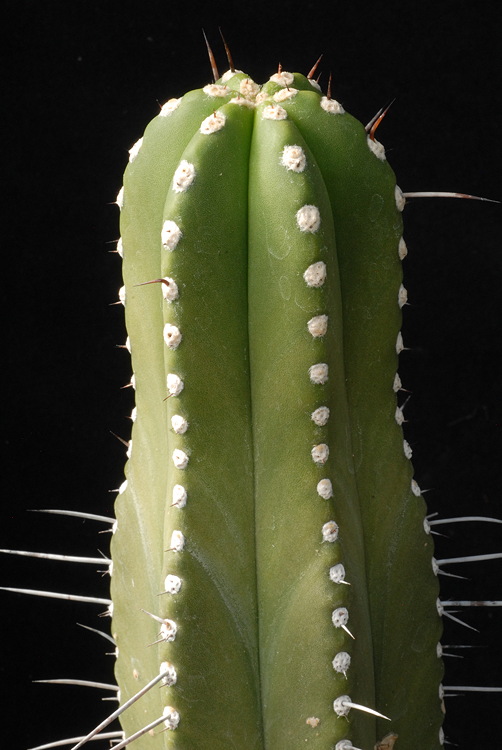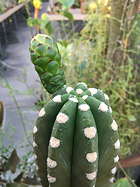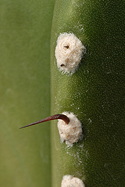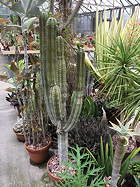Browningia was a monotypic genus for the first quarter century of its existence after its description by Britton & Rose in 1920. They named it in honor of W. E. Browning, director of the Instituto Inglés in Chile who was said to be “the friend of all Americans who visited Santiago.” The genus was erected to include that singular Peruvian - Chilean species, Browningia candelaris — its dimorphic growth of very spiny trunk topped by a candelabra of spineless branches is unique. Today the genus includes 11 (or fewer) species variously gathered from prior inclusion in Azureocereus, Cactus, Castellanosia, Cereus, Clistanthocereus, Gymnanthocereus, Gymnocereus, Lemaireocereus, Seticereus, and Trichocereus. Other species exhibit the dimorphism of B. candelaris to a lesser extent but often have a candelabriform branching pattern and similar flowers with nearly naked pericarpals reminiscent of Gymnocalycium (hence the other generic names starting with the root gymno, Greek for naked). Browningia altissima is named for its tall stature (to 10 m), rather than its altitudinal range, as it is native to the Marañon valley of Peru along its lower reaches, before it joins the Amazon. Therefore, we have not tested its hardiness in our climate. Now that we have more material to spare we can test its frost hardiness and tolerance of winter rain. Meanwhile, in the Desert Conservatory, it has formed a graceful candelabra just over a meter tall, and regularly forms buds near the stem tips. However, capturing a photo of fully open flowers has been elusive as they are strictly nocturnal. We offer rooted cuttings of HBG 40769, a plant grown from seed received from Abbey Brook Nursery in Jan, 1978. It was collected near Chamaya along the Río Marañon, Prov. Jaen, Dept. Cajamarca, Peru. $10.

Published in the Cactus and Succulent Journal, Vol. 90 (2), Summer 2018



